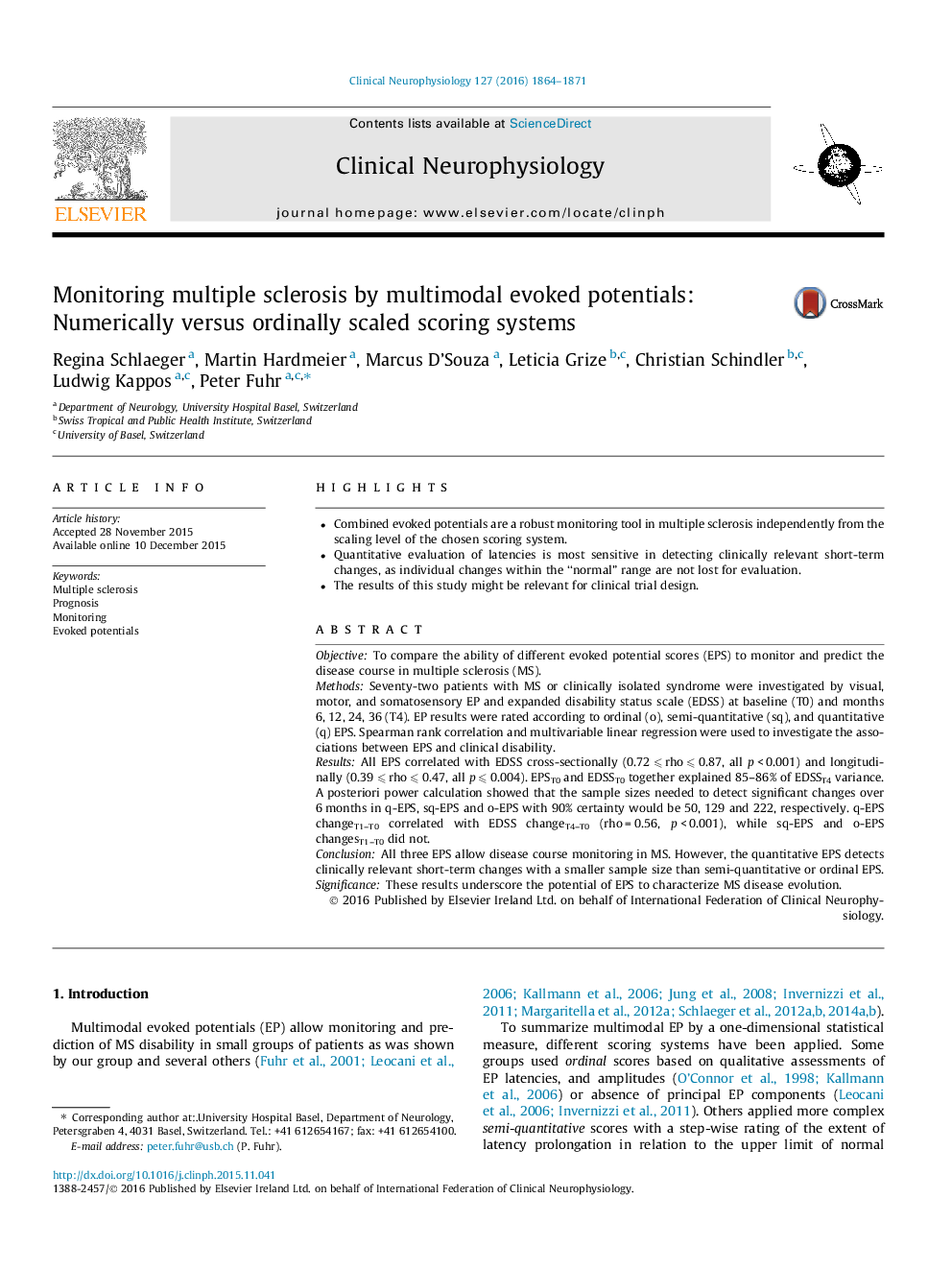| Article ID | Journal | Published Year | Pages | File Type |
|---|---|---|---|---|
| 3042899 | Clinical Neurophysiology | 2016 | 8 Pages |
•Combined evoked potentials are a robust monitoring tool in multiple sclerosis independently from the scaling level of the chosen scoring system.•Quantitative evaluation of latencies is most sensitive in detecting clinically relevant short-term changes, as individual changes within the “normal” range are not lost for evaluation.•The results of this study might be relevant for clinical trial design.
ObjectiveTo compare the ability of different evoked potential scores (EPS) to monitor and predict the disease course in multiple sclerosis (MS).MethodsSeventy-two patients with MS or clinically isolated syndrome were investigated by visual, motor, and somatosensory EP and expanded disability status scale (EDSS) at baseline (T0) and months 6, 12, 24, 36 (T4). EP results were rated according to ordinal (o), semi-quantitative (sq), and quantitative (q) EPS. Spearman rank correlation and multivariable linear regression were used to investigate the associations between EPS and clinical disability.ResultsAll EPS correlated with EDSS cross-sectionally (0.72 ⩽ rho ⩽ 0.87, all p < 0.001) and longitudinally (0.39 ⩽ rho ⩽ 0.47, all p ⩽ 0.004). EPST0 and EDSST0 together explained 85–86% of EDSST4 variance. A posteriori power calculation showed that the sample sizes needed to detect significant changes over 6 months in q-EPS, sq-EPS and o-EPS with 90% certainty would be 50, 129 and 222, respectively. q-EPS changeT1–T0 correlated with EDSS changeT4–T0 (rho = 0.56, p < 0.001), while sq-EPS and o-EPS changesT1–T0 did not.ConclusionAll three EPS allow disease course monitoring in MS. However, the quantitative EPS detects clinically relevant short-term changes with a smaller sample size than semi-quantitative or ordinal EPS.SignificanceThese results underscore the potential of EPS to characterize MS disease evolution.
